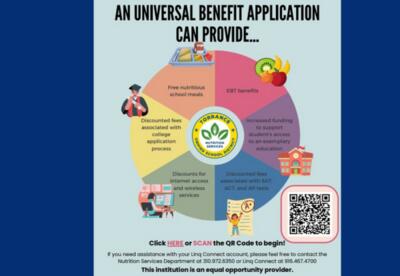How can I contact the Health Office at my Elementary School?
Phone number: (310) 533-4524 Ext:2583 | Fax: (310) 972-6385
Hours: 8:00 a.m. – 3:30 p.m.
*Any medical notes, forms, and/or medical results: you may also send to arnoldhealthoffice@tusd.org


Student Health
If your student becomes sick or injured at school, they will be sent to our health office. Our school personnel will evaluate them to determine if they should remain in school. (California Code of Regulations, Title 17, Public Health 2526).
If needed, Health Assistants are available to provide basic first aid or contact our nurse for further medical care. We will also contact 911 in the case of a medical emergency.
In order to protect the health of all students and staff at school and prevent the spread of illness, our Torrance Unified School District Health Services department had provided this chart to help you decide if your student should be kept at home.
It may be necessary to notify the school of conditions such as asthma, severe allergies, seizures, etc. These forms may assist you in notifying the school:
- Physician's Authorization for Management of Anaphylaxis and Epinephrine Auto-injector Administration at School Forms | English | Spanish
- Asthma (Inhaler) Forms | Asthma Action Plan | English | Spanish
- Seizure Medication Form
In addition, some conditions may require other types of medication to be administered. In those cases, please refer to the section below about medicine on school sites.
Any accident or injury occurring on the school grounds during school hours or school programs must be reported immediately by the student to the Health Office and/or Principal’s Office so we may best assist your student and get them the appropriate care.
Please answer or return the call as soon as possible. We may be trying to reach you about the health and wellness of your child. Please also make sure your emergency contact information is updated in PowerSchool and let the Health Office know if your child has an existing health condition that needs a preferred hospital in the event of an emergency.
The Torrance Unified School District has strict rules on medications allowed on campus. Over-the-counter drugs (for example: aspirin, ibuprofen, cough drops, and allergy tablets) and prescribed medications are treated the same.
No student is allowed to carry any type of medication in the classroom, the student's lunch box, or the student's backpack without proper authorization. Authorization is usually only granted for life-sustaining medications such as inhalers and epinephrine auto-injectors.
Please read our full District Policy on this matter.
Parents/Guardians must submit a physician-signed Medication Authorization Form (Spanish Version) for all medications, including over-the-counter, that are brought to school. Any medication that is brought to the Health Office must be properly labeled and accompanied by the required form. Medications will be kept in the Health Office and administered to students under the Health Assistant's supervision. A parent or guardian may come to the school and give the medicine to the student directly under the supervision of the Health Office if the parent/guardian does not have a Medical Authorization Form completed.
End of School Year:
All medications must be picked up at the end of the school year. All medication left after the end of school will be given to the District Nurse to discard.
To ensure student safety, all students who return to school with an orthopedic device should have a doctor’s note which includes the following:
- Date of visit, diagnosis, doctor/provider’s signature, and stamp
- Any restrictions (P.E., sports, recess, weight-bearing activities, stairs, etc.)
- Date(s) of restriction
- For crutches, the doctor/provider should indicate that crutches are to be used at school and that the student has been instructed in the proper use of crutches. Crutches will not be issued or loaned from the Health Office.
- Regardless if the student has a doctor’s note or not, your student will need to check in with the Health Office on the first day back to school so that accommodations can be made for his/her safety at school.
The school district reserves the right to restrict a child’s physical activities within the school based on safety.
Parent Information for Returning to School after an Injury or Surgery
Additional Quick Links
- Asthma Action Plan
- Authorization for Medication at School | English
- Contract to Carry Life Sustaining Medications on Campus
- High School Physical Examination
- Immunizations Requirements for School Entry (K-12th grade) | English | Spanish
- Oral Health Assessment Forms | English | Spanish
- Oral Health Assessment Waiver | English | Spanish
- Parent Consent for Diabetes Medical Management Plan
- Physician's Authorization for Management of Anaphylaxis and Epinephrine Auto-Injector Administration
- Report of Health Examination for School Entry Forms (CHDP) | English & Spanish | Waiver-English & Spanish |
- Seizure Medication Form
- If you are interested in health insurance through Covered California or Medi-Cal, please visit: Covered California Healthcare Options Flyer



